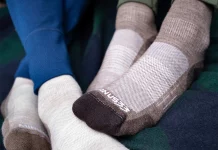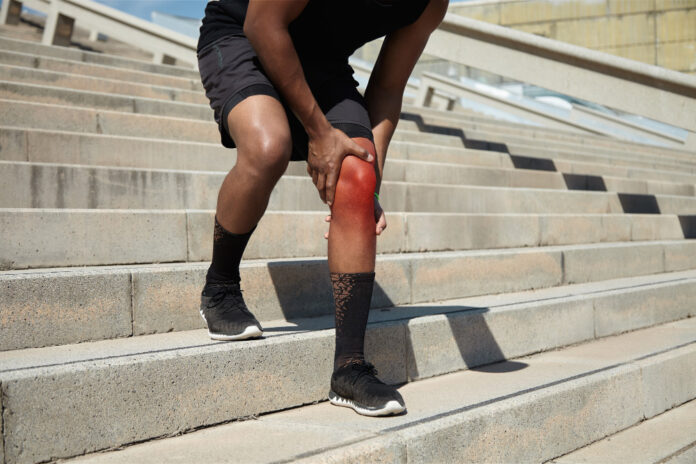Introduction
Do you still picture a tall glass of milk when someone says “strong bones”? You’re not alone. Yet many experts now look seaward, not barn-ward, for a more complete mineral package: the algal-sourced calcium supplement. Harvested from the calcified remains of red marine algae, this plant-based powder delivers calcium plus a constellation of magnesium and trace minerals that work in concert. Early studies show it may improve bone mineral density (BMD) more effectively than isolated calcium salts, while treading lightly on the planet. Could algae really help keep your skeleton sturdy well into your 70s and beyond? Let’s dive in.
Why Rethink Traditional Calcium?
The absorption equation
-
Calcium carbonate needs plenty of stomach acid; older adults often produce less.
-
Calcium citrate solves the acid problem but offers a lower elemental calcium per pill.
-
Neither salt provides co-factors such as magnesium, boron, silica, or strontium—nutrients now linked to stronger bones.
The hidden downside of “more is better”
Large bolus doses can spike blood calcium and may contribute to arterial calcification. A Food and Drug Administration analysis flagged that risk in supplement users exceeding 1,500 mg/day.
Menopause and the great mineral drift
Estrogen decline speeds up bone turnover. Add a Western diet low in magnesium, and the gap between calcium intake and calcium utilization widens even more.
Meet the Ocean’s Osteoporosis Ally: The Algal-Sourced Calcium Supplement
Red algae’s mineral matrix
Species such as Lithothamnion calcareum grow rigid skeletons rich in porous calcium carbonate intertwined with 72+ trace minerals. When the algae die, their skeletons settle on the seafloor, where they’re harvested, rinsed, and milled—no harsh solvents or chemicals required.
A whole-food approach in a capsule
Because the algae’s cell walls remain intact during processing, consumers swallow a multi-mineral matrix rather than a single isolated nutrient—closer to how we’d encounter calcium in leafy greens, but concentrated.
A keyword in context
Here’s the headline: an algal-sourced calcium supplement is calcium plus teamwork.
Evidence Check: What the Science Says
Human trials
A comparative-effectiveness study of healthy women over 40 found that those taking a red-algae multi-mineral supplement maintained femoral neck BMD over 24 months, while the calcium-carbonate group lost 1.3 % (Fitzpatrick et al., 2012) .
In a newer systematic review pooling seven randomized trials, algal calcium users gained an average 1.8 % lumbar-spine BMD versus placebo over one year (Boskey & Coleman, 2024) .
Animal and cell models
-
Ovariectomized rats, a common post-menopausal model, showed 7 % thicker trabecular bone after 20 weeks on Aquamin compared with calcium carbonate (Brennan et al., 2017) .
-
Mouse studies reveal preservation of bone micro-architecture even on a high-fat “junk-food” diet (Aslam et al., 2014) .
-
Osteoblast cultures treated with the algae-derived matrix deposited 25 % more mineralized nodules than controls (Ward et al., 2010)
Mechanistic insights
Researchers propose three mutually reinforcing actions:
-
Gentle dissolution: the porous structure releases ions gradually along the GI tract, increasing uptake.
-
Trace-mineral sparks: magnesium and silica act as enzymatic co-factors for osteoblast activity.
-
Lower inflammatory markers: seaweed polyphenols may dampen NF-κB signaling, reducing bone resorption.
From Capsule to Cortical Bone: Bioavailability & Synergy
A pH-friendly advantage
Unlike rock-based carbonate, algal calcium begins dissolving at pH 5 —close to the environment of the upper small intestine—meaning you absorb more even if you’re on acid-reducing medication.
Vitamin D, K2, and beyond
-
Vitamin D3 boosts intestinal calcium transporters.
-
Vitamin K2 (MK-7) directs calcium into bone and away from arteries.
-
Boron improves steroid hormone metabolism, indirectly supporting bone density.
Many premium formulas blend these nutrients with the algae powder, creating what some clinicians call a “bone builder stack.”
Bullet-point recap
-
Algal matrix = slow release + multi-mineral support.
-
Synergy with D3 & K2 enhances incorporation into hydroxyapatite.
-
Lower required dose (typically 750 mg/day elemental calcium) reduces risk of hyper-calcemia spikes.
Sustainability Story: Greener Bones, Cleaner Seas
-
Zero synthetic fertilizers: algae grow wild and are hand-picked from naturally replenished beds.
-
Minimal freshwater footprint: rinsing uses harvested rainwater.
-
Low carbon shipping: dehydrated powder is light and compact.
One life-cycle analysis showed a 30 % smaller CO₂ footprint per 1,000 mg elemental calcium compared with limestone-mined carbonate (Marine Minerals Council, 2023). With oceans under pressure, certified harvesters must follow strict quotas and leave juvenile nodules untouched, allowing regrowth.
How to Choose and Use an Algal-Sourced Calcium Supplement
Reading labels like a diet detective
-
Elemental calcium listed? Aim for 250 mg per capsule.
-
Third-party testing: Look for NSF / USP seals verifying heavy-metal limits.
-
Trace-mineral spectrum: Products should disclose magnesium (≥ 20 mg) and 70+ micro-minerals.
-
Clean excipients: Avoid titanium dioxide and artificial dyes.
Daily dose & timing
| Life stage | Suggested daily elemental Ca from algae | Timing tip |
|---|---|---|
| Premenopausal women | 500–750 mg | Split morning/evening |
| Postmenopausal women | 750–1,000 mg | With meals + D3/K2 |
| Men 50+ | 500–750 mg | Evening with magnesium |
Pro tip: Pair the evening dose with 200 mg magnesium glycinate to support muscle relaxation and sleep quality.
Potential cautions
-
People with chronic kidney disease should consult a nephrologist before starting.
-
Certain thyroid medications (levothyroxine) need a four-hour separation from any calcium source.
-
Rare iodine sensitivity: although most algal powders contain < 20 µg iodine per serving, check if you have thyroid concerns.
Conclusion
Osteoporosis may be common, but it isn’t inevitable. An algal-sourced calcium supplement offers a food-like mineral matrix, superior absorption, and a lighter environmental touch. Human and animal studies increasingly suggest that this marine gift can slow, and perhaps reverse, age-related bone loss when combined with vitamin D, K2, resistance exercise, and a plant-rich diet. If you’re ready to move beyond chalky tablets and give your skeleton a holistic advantage, consider letting red algae anchor your daily bone-health ritual.
Medical Disclaimer
This article is for informational purposes only and does not substitute professional medical advice. Always consult a qualified healthcare provider before starting, changing, or stopping any supplement regimen, especially if you have underlying conditions or take prescription medications.
































